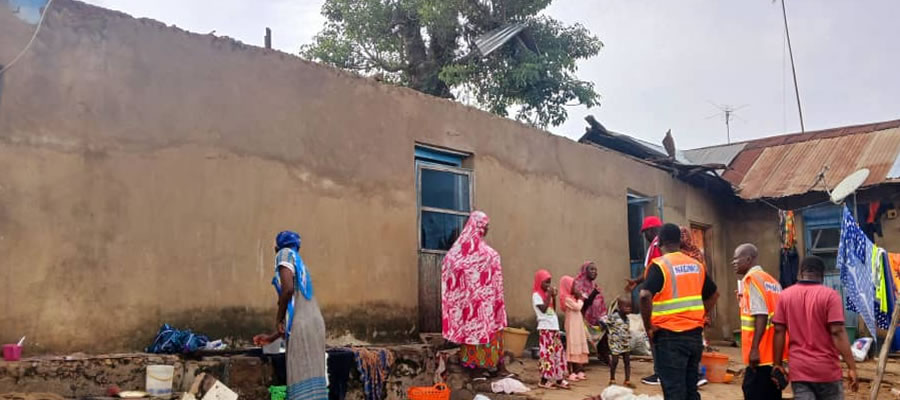

Main Source of Water for Drinking and Other Domestic Use
Table 8.10 shows the distribution of the main sources of water for drinking and for other domestic purposes.
Main Source of Water for Drinking
Improved drinking water is an important aspect of the health of household members. The UN Millennium Development Goal Seven, Target 7C aims to reduce by half the proportion of people without sustainable access to safe drinking water and basic sanitation by 2015.
Water sources are classified as ‘improved’ or ‘unimproved’. Sources considered as improved are piped water into homes, public stand pipe, borehole, protected well, protected spring, and rain water collection. Unimproved water sources are unprotected wells and springs, rivers and streams and vendors and tanker trucks (WHO, UNICEF, 2000).
The main source of water for drinking for most households in the municipality is borehole/pump/tube well, accounting for 35.5 percent of households. Borehole/pump/tube well is, however, more prevalent in the rural areas of the municipality. Pipe-borne water (both inside and outside dwelling units and public stand pipes) accounts for a quarter (25.8%) 61 of all households. One in ten households (11.7%) use sachet as the main source of water for drinking.
Table 8.10 further shows that nearly half (47.8%) of urban households use pipe-borne water for drinking compared to only six percent of those in the rural localities. The use of sachet water for drinking is also more widely used by urban households (21.5%) than rural households (2.9%). Unprotected wells and river/stream are the main sources of water for two percent and 10 percent of households in the municipality respectively. Five out of every ten rural households (56.0%) use borehole/pump/tube well as their main source of water for drinking while only 12.4 percent of urban households use it. Figure 8.2 has the distribution of the main sources of water for drinking shown by type of locality in the municipality.
Main Source of Water for Domestic Use
Borehole/pump/tube well (35.7%), pipe-borne (26.1%) and protected well (18.1%) are the main sources of water for domestic use in the Suhum Municipality. River/stream is also a major source of water for domestic use in the municipality and accounts for 12.4 percent of all households.
In the urban areas, nearly half (48.3%) of households use pipe-borne water for domestic use while 16.0 percent and 28.2 percent respectively use borehole/pump/tube well and protected well. The major sources of water for domestic use in the rural areas are respectively borehole/pump/tube well (53.6%) and river/stream (21.5%).
Almost an equal proportion of households use borehole/pump/tube well for drinking purposes (35.3%) and for domestic purposes (35.7%).
Bathing and Toilet Facilities
The type of bathing and toilet facilities available to dwelling units in the municipality is shown in Table 8.11.
Bathing Facilities
Bathing facilities available in dwelling units can be categorized primarily into four main types: bathroom for exclusive use, shared bathroom in the same house, shared open bathing cubicle and others. The proportion of dwelling units with bathrooms exclusively used by households is 24.8 percent. Four in ten dwelling units (40.6%) have shared separate bathrooms in the same house. About 22 percent of households use shared open cubicle while 5.4 percent of dwelling units use open space around house. Figure 8.1 compares the bathing facilities available in the municipality by type of locality.
In the urban areas of the municipality, 15.6 percent of households have their own bathrooms for exclusive use and this compares with 33.1 percent in the urban localities. Furthermore, in the urban localities, five in ten households (55.2%) have shared separate bathrooms in the same house while two percent of them bath in open spaces around their houses. These compare with 27.5 percent and 8.6 percent respectively in the rural localities.
Toilet Facilities
An efficient and hygienic method of human waste disposal available in a dwelling unit is a critical indicator of the sanitary conditions of the unit and is an indirect measure of the socio-economic status of the household.
The most common form of toilet facility used in the municipality is the pit latrine. According to Figure 8.2, four in ten (42.2%) households use the pit latrine. The second most common toilet facility used in the municipality is the public toilet (WC, KVIP, and Pit Pan). A little more than a quarter (26.7%) of households use the public toilet. In terms of urban-rural comparison, about 17 percent of households use the pit latrine in the urban areas while in the rural areas, it is six in ten (64.6%).
The proportion of households using public toilet is the highest in the urban localities (38.6%), which is more than twice that recorded in the rural areas (16.0%). Thus, most households in the rural areas use pit latrine while in the urban areas, the public toilet is the most commonly used facility.
The Kumasi Ventilated Improved Pit Latrine (KVIP) is the third most used toilet facility in the municipality. One in three (30.6%) households and one in ten (9.8%) in the urban and rural areas respectively use KVIP.
According to Table 8.11, water closet (WC) type of toilet facility is used by 5.8 percent of the households. As expected, WC use is higher in the urban areas (10.6%) than in the rural (1.4%).
Over the years, the use of bucket/pan latrine has been banned and vehemently discouraged. Consequently, less than one percent of households in the municipality are still using bucket or pan latrine: 0.7 percent in urban localities and 0.1 percent in rural areas.
Five percent of households in the municipality practise open defecation. This occurs mainly in the rural localities (7.7%) of the municipality compared to the urban localities (1.9%).
Method of Waste Disposal
The method of solid and liquid waste disposal in the municipality by type of locality is presented in Table 8.12.
Solid Waste Disposal
One of the challenges of both urban and rural areas in Ghana is adopting modernized hygienic solid waste disposal systems. Acceptable waste management helps to prevent the spread of some types of infections and improves the quality of the environment.
The most widely used method of waste disposal in the municipality is dumping into a container (38.2%) and into a public dump site (27.0%). The proportion of households that burns their rubbish is 14.9 percent while 12.7 percent throws away their refuse indiscriminately. 65
In the urban areas, seven in ten (72.6%) households dispose their refuse into the public container while only 1.1 percent is collected. The situation is, however, different in the rural areas where the main methods of refuse disposal are public dump site (36.0%), indiscriminate dumping (23.3%) and burning (23.3%).
Liquid Waste Disposal
About 73 percent of households in the municipality dispose their liquid waste by throwing onto the compound of their houses (48.8%) and onto the street (24.0%). A little more than one-quarter (25.4%) of households dispose of their liquid waste through improved methods of disposal, namely the sewage system (0.9%), drainage system into gutter (6.2%), soak away (1.3%) and into the gutter (17.0%).
In the urban areas, 23.5 percent and 27.1 percent respectively throw their liquid waste onto the compound and onto the street. Four in ten (43.2%) of households in the urban areas throw their liquid waste into the gutter and only 1.7 percent of them make use of the sewage system.
In the rural areas, as high as 71.7 percent of households throw their liquid waste indiscriminately onto the compound (71.7%) while another 21.3 percent throws it onto the street.
Date Created : 11/27/2017 4:11:01 AM











 facebook
facebook
 twitter
twitter
 Youtube
Youtube
 +233 593 831 280
+233 593 831 280 0800 430 430
0800 430 430 GPS: GE-231-4383
GPS: GE-231-4383 info@ghanadistricts.com
info@ghanadistricts.com Box GP1044, Accra, Ghana
Box GP1044, Accra, Ghana